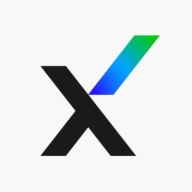

Trellix Endpoint Security Platform and Fortinet FortiClient are key players in the endpoint security market. Trellix stands out for its advanced threat protection and central management, while Fortinet FortiClient offers superior integration capabilities and a cost-effective package.
Features: Trellix offers extensive central management, data loss prevention, and advanced threat protection, meeting diverse protection needs. Fortinet FortiClient provides integration with Fortinet products, featuring antivirus, web filtering, and VPN in one package.
Room for Improvement: Trellix needs to enhance memory usage and integration, especially after merging with FireEye. It also struggles with high resource consumption. Fortinet FortiClient should improve support for older Windows versions, user interface, and multi-factor authentication.
Ease of Deployment and Customer Service: Trellix uses hybrid cloud and on-premises deployments, though its FireEye integration may impact support quality. Fortinet FortiClient offers strong customer service and similar deployment options.
Pricing and ROI: Trellix is more expensive but offers high ROI by offsetting initial costs through effective threat management. Fortinet FortiClient is cost-effective, appealing to budget-conscious businesses with competitive pricing and integration within the Fortinet ecosystem.
The VPN performance has a substantial impact on our remote workforce.
We have observed tremendous return on investment after implementing Trellix Endpoint Security as it is a more cost-effective solution compared to other products.
Clients appreciate the solution’s customization capabilities and ongoing product improvements.
There are two parts: one is the encryption which is standard and no AI is needed, but the data protection part could benefit from AI to detect new types of data and protect it.
They initiate the troubleshooting process quickly and resolve issues in a timely manner.
In 99% of cases, we do not have to do configurations on our own as they are normally handled by their service providers.
They provide very good support, and an issue I had was resolved quickly over the phone.
The response time is a notable issue.
I would rate their customer service nine out of ten.
When we implemented Trellix Endpoint Security in their network, multiple malwares were detected.
We normally take into consideration while installing the product that it can scale up to approximately 20%, but not more than that.
I hope Fortinet will start an insider developer program where professionals can provide feedback on new releases to ensure improvements.
We can add more licenses and Fortinet tokens, demonstrating excellent scalability.
I would rate the scalability of the solution as a six out of ten, indicating some challenges due to downtime requirements.
Trellix Endpoint Security is scalable.
Its stability level is excellent.
I normally get a call within 15-20 minutes after logging a complaint.
The overall stability of Fortinet FortiClient rates at nine out of ten.
I would rate its stability as nine out of ten.
I would rate the stability of Trellix Endpoint Security as near perfect, close to ten out of ten.
I think it's stable enough; earlier it had glitches, but now it's stable enough.
FortiClient needs improvement in restricting user information and ensuring more secure customer data to better protect source code and reduce the risk of security breaches.
There are advanced features like Zero Trust that I currently do not use but could be beneficial for security.
Fortinet frequently releases updates without thorough testing.
What needs improvement in Trellix Endpoint Security is the reduction of resource consumption by the scanning feature.
Improvements are needed in forensic analytics to detect specific vulnerabilities.
The product does not seem to be cloud-native.
FortiClient is a value-for-money product and is not considered expensive compared to similar products on the market.
Justifying the price to clients can be difficult.
FortiClient is included in a package with the UTM features, so there is no separate cost for it.
The license costs are very reasonable, around 1,000 to 1,200 rupees per year.
Trellix Endpoint Security is cost-effective and provides excellent value for money.
The most valuable feature of FortiClient is its high security level.
We appreciate its VPN capabilities and the features that offer extra security functionalities like antivirus and malware scanning.
I strongly recommend this solution, especially for Fortinet customers who use FortiGate or other Fortinet products, as they can easily integrate these features and exchange information seamlessly.
Trellix Endpoint Security is a proven, robust, and cost-effective solution that protects the organization from different types of ransomware and attacks.
Including options like Application Control (formerly Solidcore), integrated monitoring, change control, DLP, and advanced threat protection, the solution offers comprehensive security.
The detection capability of Trellix Endpoint Security is higher than traditional antivirus solutions.
| Product | Market Share (%) |
|---|---|
| Trellix Endpoint Security Platform | 3.9% |
| Fortinet FortiClient | 1.8% |
| Other | 94.3% |


| Company Size | Count |
|---|---|
| Small Business | 58 |
| Midsize Enterprise | 23 |
| Large Enterprise | 24 |
| Company Size | Count |
|---|---|
| Small Business | 67 |
| Midsize Enterprise | 36 |
| Large Enterprise | 59 |
FortiClient is a fabric agent that delivers endpoint protection, endpoint compliance, and secure access in a single, lightweight, lightweight client, providing visibility, information, and control to your endpoints. In addition, it enables secure, remote connectivity to the security fabric. It also integrates network and endpoint with segmentation and automation. FortiClient enables unified endpoint awareness by sharing endpoint telemetry with the security fabric. It is compatible with third-party EDR (endpoint detection and response and anti-malware solutions.
The FortiClient fabric agent can:
• Report on the status of a device, including firmware version and applications running.
• Send all suspicious files to a fabric sandbox.
• Enforce USB control, application control, URL filtering, and firmware upgrade policies.
• Provide application firewall service and malware protection.
• Enable devices to connect securely to the security fabric over either ZTNA tunnels or VPN (IPsec or SSL), both encrypted. The connection to the security fabric can be either a SASE service or a FortiGate next-generation firewall.
You can purchase FortiClient with one of three levels of capability:
Zero Trust security - The ZTNA edition enables both VPN and ZTNA encrypted tunnels, as well as USB device control and URL filtering.
Endpoint security - The EPP/APT edition adds AI-based NGAV (next-generation antivirus), application firewall, endpoint quarantine, and support for cloud sandbox.
Cloud-based endpoint security
Benefits and Features
• Fabric agent leverages integrations and provides telemetry information to the rest of the Fortinet security fabric.
• SAAS control and web/content filtering
• Dynamic access control helps with automation and simplifies compliance.
• Software inventory management enables visibility as well as management of licenses.
• Automated response detects and isolates any endpoints that may be compromised.
• ZTNA delivers better remote access and consistent application access policies
• Managed endpoint security services remotely assist with setup, configuration, deployment, vulnerability monitoring, and overall monitoring of endpoint security.
Reviews from Real Users:
PeerSpot users like that FortiClient is easy to use and integrates well with other solutions. They also appreciate the richness of its features and find it to be inexpensive in comparison to other products that require separate purchases for separate features.
Trellix Endpoint Security Platform offers essential features like centralized management, threat prevention, and encryption, facilitating seamless scaling and integration with other systems while prioritizing user security.
This comprehensive platform focuses on endpoint protection, antivirus capabilities, and malware defense. It enhances cybersecurity with data loss prevention, advanced threat detection, and AI-driven features for reliable protection without impacting performance. Central management and advanced reporting streamline integration and ease of use. Flexible policy deployment through the management console and its robust security measures, such as DLP and device control, further increase protection. Challenges include high CPU and memory usage affecting performance, a complex interface, and lengthy deployment. Third-party integration and Windows Hello support need improvement. Additional concerns involve improved threat detection and faster technical support responses.
What are the key features of Trellix Endpoint Security Platform?Trellix Endpoint Security Platform is widely implemented in industries such as banking and government for securing mobile and desktop devices. Its capabilities cover network security, device control, and remote access protection, catering to diverse environments by offering robust cybersecurity management against advanced threats.
We monitor all Endpoint Protection Platform (EPP) reviews to prevent fraudulent reviews and keep review quality high. We do not post reviews by company employees or direct competitors. We validate each review for authenticity via cross-reference with LinkedIn, and personal follow-up with the reviewer when necessary.